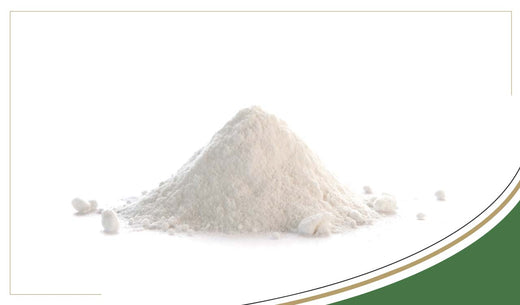Can D-Mannose Prevail in the Fight Against E. coli's Antibiotic Resistance?

The adaptability of most uropathogens, a process of natural selection, makes it difficult to destroy entire colonies, especially once they're deeply embedded inside the bladder wall.
E. coli, the cause of approximately ninety percent of all urinary tract infections, is a well-studied, acid-tolerant bacterium that is naturally present in the human intestine, even in new-born babies. They can survive highly acidic environments such as fermented foods, and even thrive in acidic urine with a pH as low as 2.
Until very recently it was thought that each new urinary tract infection was caused by a new and distinct contamination. Recurrent infections however, are usually arise from bacteria that survived the initial infection, and have been dormant in the bladder until stimulated, to once again multiply out of control.
Survival of The Fittest
There is a growing body of evidence showing E. coli can survive antibiotic attack. The pattern for most recurrent infections leads you to the same conclusions. Darwin's theory of evolution by natural selection explains the process of survival in more complex forms of life, however the theory also applies to unicellular organisms such as E. coli. All life forms naturally evolve or mutate, and those with characteristics best suited to the current environment have the best chance of survival. Otherwise known as: survival of the fittest.
When bacteria infect the bladder, cells of the bladder lining begin to self-destruct in a process known as apoptosis, and fall away from the lining, carrying bacteria with them. This is one of our natural defence mechanisms. However it is not entirely effective, so the remaining bacteria continue to multiply.
If you destroy an entire colony of a specific strain of bacteria with a specific antibiotic, and you are reinfected with a fresh contamination of the same specific strain of bacteria, then using the same antibiotic to treat the new infection would not increase the resistance of that strain. That specific antibiotic would be just as effective against the new infection, and the colony would be again entirely destroyed.
Just like humans however, Escherichia Coli are organisms with natural variation from one individual to another. These occasional mutations which produce genetic variation, give rise to different survival capabilities. Some may be able to survive unusual heat, or high acidity, or even antibiotic attack. The newly evolved survival characteristics are then passed on to their descendants, which are now well adapted to survive, or, resistant to antibiotics.
Super Resistance
Doctors attempt to fight the resistance of E. coli by varying the type of antibiotics used, or by increasing the dose, or duration of the course, but this can inexorably increase resistance, leading to super resistant strains of E. coli.
Natural variants of the E. coli may not succumb to a certain type of antibiotic and remain in the system to multiply and establish colonies of their own, passing on their new-found resistance to the antibiotic utilised. You can no longer use the same antibiotic to destroy the surviving variants. We know for a fact that E. coli can eventually become resistant to any antibiotic.
Unfortunately, E. coli is also one of the most dangerous organisms humans could have a symbiotic relationship with. It is a fast mutating organism, capable of doubling the size of it's colony every 20 minutes. It can survive both inside and outside the human body, in your hair, on your skin, its even capable of surviving for weeks on towels, door handles, toilet seats and stainless steel surfaces.
Boiling water or food for a full minute will destroy any active E. coli, but if allowed to cool down, any spores (seeds) that survived, can give rise to a new colony of bacteria. E. coli can hibernate in freezing temperatures almost indefinitely. They can even live on soap!
Fighting Back
E. coli has an amazing affinity with the bodies of warm blooded animals like us. Once it has entered the urinary tract, it develops molecular hairs called fimbria. These molecular hairs stick like Velcro to the cell walls of body tissue and anything else with the correctly oriented D-Mannose molecules. Our bodies naturally produce D-Mannose, in the urinary tract, the bladder and the lining of the bladder, providing ideal docking ports for E. coli, which then begin to burrow deeper into the walls of the bladder, releasing their toxins and causing the bladder to become inflamed. Otherwise known as Cystitis.
In this image the E. coli are the 'docked' white egg-shaped cells. The E. coli bacteria are attracted to the D-Mannose in the cell walls. By providing an alternative source of D-Mannose that will exit the bladder in urine, E. coli can be prevented from sticking to the bladder walls.
The E. coli which are covered with hair-like fimbria, contain lectins (proteins which bind to sugars), hook themselves to the D-mannose in the walls of the bladder, in a process known as 'agglutination'. Once they are attached to ingested D-Mannose suspended in the bladder's accumulated urine, they can be expelled when emptying the bladder.
D-Mannose is found in wild plants and forest timbers, in trace amounts in many fruits and vegetables, and is a natural component of some cells in the human body. A natural anti-inflammatory which doesn't destroy bacteria like antibiotics, but bio-chemically attracts them. The bacteria's own attachment mechanism is used against them.
Introducing ancillary amounts of D-mannose into the bladder coaxes the bacteria into attaching themselves to the more readily available D-mannose. Less of the bacteria attach to the body's natural mannose in bladder cells. The bonded bacteria and introduced D-Mannose are now free floating in the urine, and are then flushed out when you urinate. Which is why its recommended you drink a glass of water or two after ingesting D-Mannose.
 Free Royal Mail 24 Tracked Delivery
Free Royal Mail 24 Tracked Delivery
 UK Customer Service - 01904 789 559
UK Customer Service - 01904 789 559
 Read Thousands of Independent Reviews
Read Thousands of Independent Reviews















